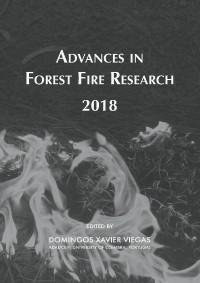Please use this identifier to cite or link to this item:
https://hdl.handle.net/10316.2/44642| Title: | Effects of law enforcement efforts on intentional wildfires | Authors: | Prestemon, J. Butry, D. Chas-Amil, M. L. Touza4, J. |
Keywords: | arson;arrest;crime;Galicia;incendiary;Spain | Issue Date: | 2018 | Publisher: | Imprensa da Universidade de Coimbra | Journal: | http://hdl.handle.net/10316.2/44517 | Abstract: | Wildland managers and law enforcement organizations devote significant resources attending to the consequences of illegal firesetting across many parts of the world. Intentional wildfires may be set for reasons of malice, as acts of protest, or as pure vandalism. Incendiary wildfires result in deaths, property, and resource damages that exceed rates found for fires of accidental or natural origin. In fact, there is a great concern with how such fires tend to occur nearer populations and values at risk. Extensive evidence suggests that arsonists were behind many of the deadly wildfires that have occurred in many countries, particularly in 2017 in the United States (California), Chile, Portugal, and Spain (Galicia). Apart from firefighting resources, prevention measures may reduce wildfire occurrence. Prevention measures may include fuel reductions (thinnings, fuel breaks, prescribed fire). Research has also shown that education programs and information campaigns, fire investigations, surveillance efforts, as well as law enforcement efforts could reduce unwanted ignitions. Studies of the effects of law enforcement or other wildfire prevention measures have shown that these interventions can reduce wildland arson occurrence overall. Based on Becker’s economic theory of crime, law enforcement affects crime in a direct way, through fines and incarceration, and in an indirect way, through deterrence. Criminologist have also recognized the possibility that efforts by law enforcement intended to reduce crime in one time or place or of one type could lead to displacement of crime in a variety of ways (temporal, spatial, target, tactical, and offense), but some research has shown that the opposite could happen—diffusion. In the spatial sense, one kind of diffusion is where law enforcement efforts in one defined location lead to reduced crime across many neighboring locations. The objective of this paper is to describe our efforts to analyze the effect of law enforcement measures —namely, arrests for intentional firesetting— on intentionally-set illegal wildfires. We have conducted two studies (Prestemon et al. 2012, forthcoming) showing evidence for Galicia (NW of Spain). Firstly, we investigated, the effect of an arrest for intentional firesetting on future intentional wildfires in the same location and in neighboring locations. Secondly, we evaluated whether arrests have displacement or diffusion effects, as they may increase or decrease intentional wildfires in nearby locations or later periods, due to both a risk-perception adjusting effect and an incapacitation effect. Therefore, by relating intentional wildfire occurrence to arrest of suspected firesetters, we identify a likely principal mechanism for achieving law-enforcement success. Additionally, we separately quantify the effects of an arrest on agriculturally-based versus non-agriculturally-based intentional firesetting, leaving open the prospect that these two subcategories have different behavioral responses to law enforcement actions and other variables. Such differences could be key to the design of effective policing strategies in response to firesetting in the region. | URI: | https://hdl.handle.net/10316.2/44642 | ISBN: | 978-989-26-16-506 (PDF) | DOI: | 10.14195/978-989-26-16-506_125 | Rights: | open access |
| Appears in Collections: | Advances in forest fire research 2018 |
Files in This Item:
| File | Description | Size | Format | |
|---|---|---|---|---|
| effects_of_law_enforcement_efforts.pdf | 620.92 kB | Adobe PDF |  |
Items in DSpace are protected by copyright, with all rights reserved, unless otherwise indicated.
